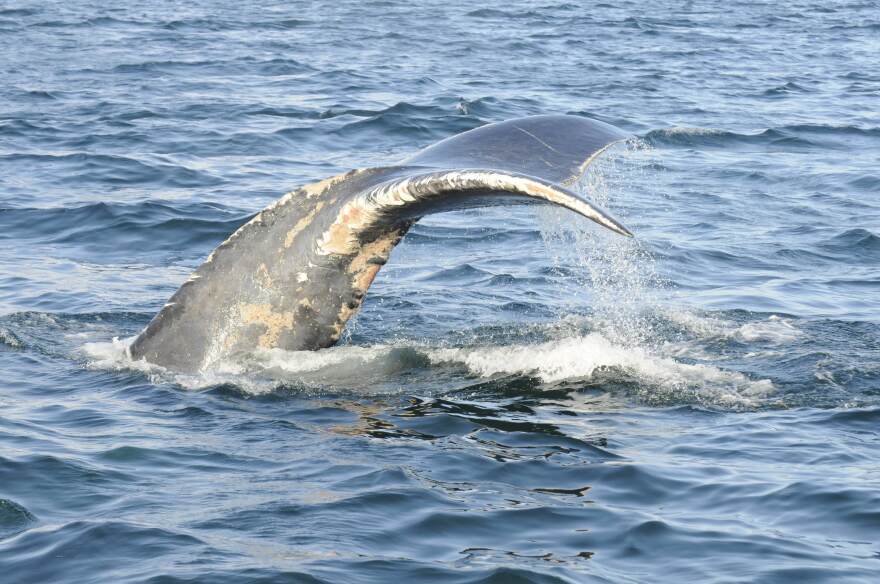Fishing gear puts rare right whales in more danger than previously thought, according to new research from Duke University and the New England Aquarium.
Ropes attached to unattended fishing equipment can entangle and kill whales. The recent study found that even when whales survive an entanglement, they are less healthy and less likely to reproduce.
For the North Atlantic right whale, this is very bad news. The whale population has recovered from a low point of 25 to 50 individuals to about 350 worldwide. But this precariously low population is declining fast again, and the new research supports claims that fishing equipment – particularly gear that stays in one place, like gillnets and lobster traps – is the biggest risk to the whales. North Carolina is one of the only states that still allows commercial gillnetting.
Michael Moore, veterinary scientist at the Woods Hole Oceanographic Institution, describes fishing ropes as “a whale trap.”
“Essentially, the vertical lines from these gear types become like some giant floss, and they run into them with their mouths open,” he explained. “That startles them. On the basis of what we see in the mortalities and the trauma that’s evident, we imagine that they spin and wrap the gear around their heads or their flippers and also the tail sometimes.”
Rope entanglement can cause everything from superficial scarring to death by drowning
For right whales, entanglement in fishing gear is shockingly common. A previous study found that over 80% of whales are entangled at least once in their lifetimes.
The study used three decades’ worth of photos of right whales to track entanglements and health over time. Most whales with severe entanglement injuries didn’t survive beyond three years.
The deadly consequences of entanglement are well documented, but this latest research shows that the whales that survive an entanglement are less healthy and less likely to breed. The health impacts of entanglement were worse for female whales, which is particularly worrying for the survival of the population.
Entanglement isn’t the whole story. Even the minority of whales that avoid entanglements have been less healthy in recent years, the researchers found, possibly due to climate change causing the whales’ food sources to be less predictable. Collisions with fast-moving ships are also a major cause of death. Still, the new study indicates that fishing gear is the largest and most immediate risk to this critically endangered species.
Robert Schick, research scientist at Duke University and co-lead author of the new study, maintains that it’s not too late for the North Atlantic right whale population. Their survival would require big changes to the kinds of fishing gear that are used in the whales’ habitat. But if the threats from fishing ropes and fast-moving boats can be reduced, says Schick, “they’ve shown and proven that they can recover from really low numbers.”







